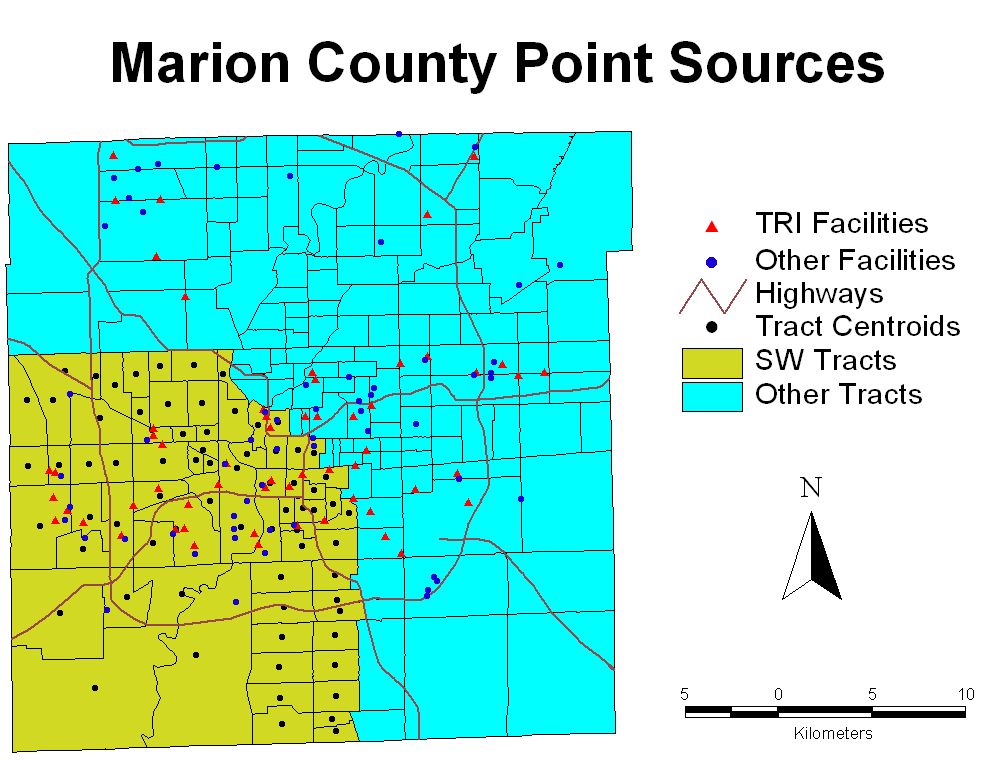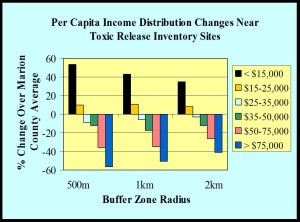Challenge
Based on the quality of air detected throughout Marion County, Indiana, the Indianapolis Urban League Environmental Coalition (IULEC) desired to complete a scientific study to determine if air quality was more likely impaired near low-income and minority populations. Mundell completed an environmental justice grant to the United States Environmental Protection Agency Region V on behalf of IULEC which supported the development of a GIS-based approach to the analysis.
Action
Mundell acted as grant project manager and coordinated all technical task activities, communication and submittals to the U.S. EPA for the purposes of satisfying the objectives of the grant application. The project team built a database that included existing air toxic release data from the Toxic Release Inventory (TRI)), modeled precipitation data, and demographic information (race, income, population age, location of vulnerable facilities such as nursing homes, schools, and child care facilities). During the study, IULEC’s research team determined that hospital admission or diagnosis code data was not readily available from the Marion County community health assessment in a format usable for evaluation within the GIS database. As such, no relational analysis could be performed using actual health data at the time.
Results
The results of the relational data evaluation indicated that low-income citizens and people of color are disproportionately located near TRI facilities in Marion County. As a result, there is a greater potential for impact to these populations’ health from these facilities than the average Marion County population. In particular, the southwest quadrant of the county was identified as the area most likely to have impacts of chemicals of concern above acceptable human-health risk levels, and was targeted for increased future monitoring.
The results of the study were presented in a technical publication entitled “Race, Income and Toxic Air Releases in Indianapolis, Indiana,” and presented at the 21st Annual Meeting of the Society for Environmental Toxicology and Chemistry in November 2000 in Nashville, Tennessee. Public educational programs were completed through press releases and press conferences, interviews on local TV, a 30-minute public TV access station program, and community workshops. All objectives of the U.S. EPA-funded study were met and the U.S. EPA indicated the project was satisfactorily completed in accordance with their guidelines.

(TRI = Toxic Release Inventory Facility)



